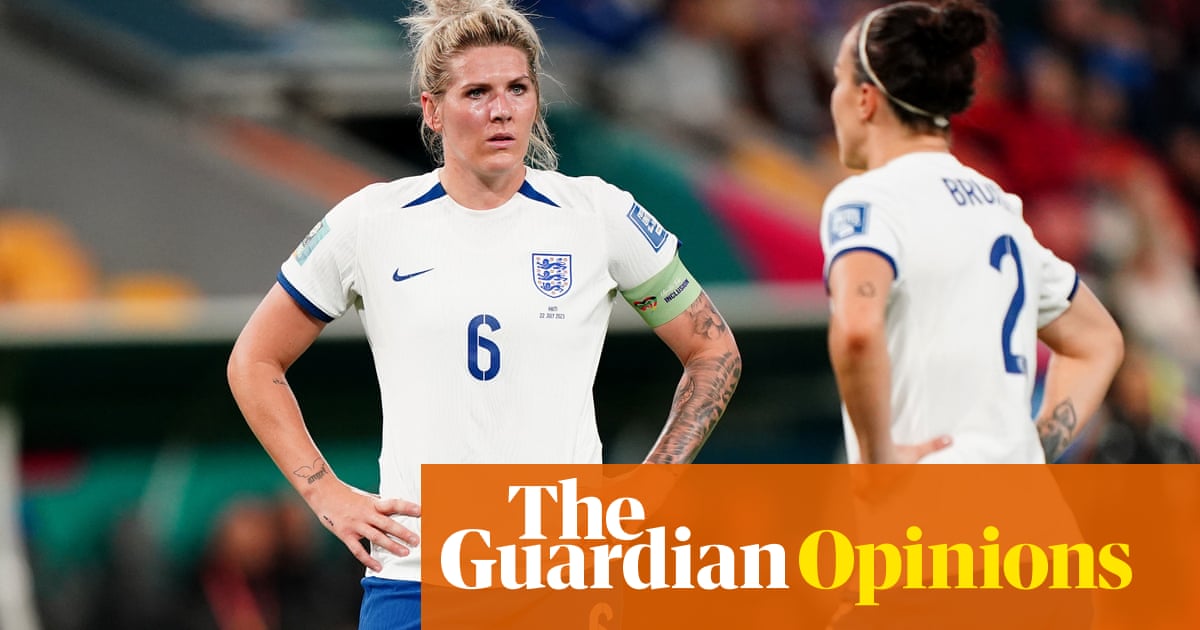
So far at the World Cup, the competitiveness of the matches has been really great to see. The acclimatisation to Australia and New Zealand, with such a big time difference, will be difficult for those teams that have travelled so far but I think they will all start to get stronger.
Nations that were seen on paper as weaker sides, with less experience, have been able to make the games challenging. Some teams that have not been spoken about before the tournament, like Spain and Japan, have played some really great football. It highlights how unpredictable this tournament is going to be and how many nations can end up winning it.
England should be really happy to be getting off to a winning start against Haiti, though they would have liked much more control. If they had controlled possession better, they wouldn’t have opened themselves up to Haiti’s dangerous counterattacks. A lot of the time, England lost the ball close to the midfield line. That’s no place to lose the ball, and if you lose the ball further up in the opponents’ third it’s far easier to contain them and counterpress.
Haiti’s No 6, the excellent Melchie Dumornay, was screening Keira Walsh, making it difficult for the Lionesses midfielder to get on the ball in the central area. That forced Keira to go wider, and that lost England their central pivot. It created problems. Each of England’s opponents in this tournament are going to try to take Keira away from the centre as she’s so important for the way they play.
To mention Dumornay again, she’s a world-class talent, phenomenal. There are strong reasons why Lyon bought her and everyone else wanted her, and England got a little unbalanced by losing the ball early in the buildup phase, just where you don’t want to lose the ball to someone of that quality. You’ve positioned your full-backs higher, your No 8 and No 10 higher, and you don’t want to risk leaving your No 6 and two central defenders exposed in the transitional phase. To maintain more control, Georgia Stanway could perhaps play closer to Walsh and Sarina Wiegman could maybe keep the full-backs deeper during the buildup.
It didn’t click up front but that’s understandable. This England team has not played together too much. I’m quite sure they will get it right by working on their timing and adding more variety in the attacking third. England fell into the trap of playing the ball into the air. The quality of chances in the air is always going to be less than on the ground. It’s so much easier to finish with your feet.
In defence, Millie Bright came in after a long time out, and you have to see her performance from that perspective, playing alongside Jess Carter, with whom she has that club relationship at Chelsea. Sarina must be really happy her captain got 90 minutes into her legs and I’m confident Bright can grow into the tournament.
Mary Earps made a phenomenal save from Dumornay and the way she got down so low to Roseline Eloissaint’s shot was the only way she could have saved it, coming out so quickly. It was brilliant, but that’s what you need to bring to a tournament if you are one of your team’s stars.
In Sydney on Friday, England will face a tactically flexible team in Denmark. Their coach, Lars Søndergaard, uses a variety of formations. One formation they’ve used against stronger opposition is a 3-4-3 or a 5-4-1, dependent on whether they are in a medium block. There’s a high probability they go to a back five to deal with England’s wide attacking play.
They also have quite a few different attacking options; Amalie Vangsgaard, who scored the header against China, came off the bench. She’s really good at running in behind and she’s a change I think Denmark will make, in one of the three attacking positions in a 3-4-3. She can be a really strong counterattacking player, helping to try to create space for Pernille Harder. In the second half against China, once the game opened up a little bit more, you could see how effective Harder is when she drives with the ball.
That will be important for England. They are likely to have much more of the ball, but can they force Harder back so deep that her runs don’t become an immediate threat if they lose possession? If England lose it too many times in midfield positions it will be perfect for her to exploit that space, and for someone like Vangsgaard to get in behind.
Stanway’s goal against Haiti came from a penalty retake, and something that’s struck me so far at this World Cup is the seeming increased difficulty of penalties – to the point of becoming a statistical anomaly. Normally, 79% of all penalties are converted. It may be down to the pressure of the World Cup and how much it means to players. By the second game, some of those nerves may have settled a bit. But maybe that’s the way it’s going to be throughout the tournament.
Meanwhile, I just don’t understand anything about the VAR stadium announcements for penalties. When Fifa first communicated about new VAR announcements I thought it would be like in the NFL or in rugby where referees actually deliver an explanation for a decision. That I really liked, because too often people don’t understand the rules well enough, and the referee gets misunderstood as a result.
I think it could help everyone’s understanding if they could say, for example: “This is a handball and that’s the reason for the award.” But as it stands now, with the referee just announcing they have awarded a penalty, it’s rather pointless. I know they have awarded a penalty because they are pointing to the penalty spot.












